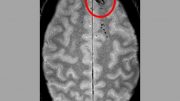
A study reveals a link between post-concussion headaches and increased brain iron levels, suggesting potential as a biomarker for understanding these conditions. Analyzing individuals with mild traumatic brain injuries against a control group, the research found significant differences in iron accumulation in specific brain regions, with the degree of accumulation correlating with the number of concussions and headache frequency.
Individuals experiencing headaches following concussions may also be more likely to have higher levels of iron in areas of the brain, which is a sign of injury to brain cells, according to a preliminary study released, that will be presented at the American Academy of Neurology’s 76th Annual Meeting taking place April 13–18, 2024.
“These results suggest that iron accumulation in the brain can be used as a biomarker for concussion and post-traumatic headache, which could potentially help us understand the underlying processes that occur with these conditions,” said study author Simona Nikolova, Ph.D., of the Mayo Clinic in Phoenix, Arizona, and a member of the American Academy of Neurology.
The study involved 60 people who had post-traumatic headache due to mild traumatic brain injury, or concussion. The injuries were due to a fall in 45% of the people, 30% were due to a motor vehicle accident and 12% were due to a fight. Other causes were the head hitting against or by an object and sports injuries. A total of 46% of the people had one mild traumatic brain injury in their lifetime, 17% had two, 16% had three, 5% had four, and 16% had five or more mild traumatic brain injuries.
Comparative Analysis
The people with mild traumatic brain injuries were matched with 60 people who had not had concussions or post-traumatic headaches.
All the participants had brain scans to look at iron levels in various areas of the brain, using an indirect measure for iron burden. For those with mild traumatic brain injuries, the scans were taken an average of 25 days after the injury.
The study found that compared to the people without concussion, those with a history of concussion and headaches had higher levels of iron accumulation in several areas of the brain, including the left occipital area, right cerebellum, and right temporal lobe. For example, in the left occipital area, those with concussion and headaches had more iron accumulation than those with no concussion or headaches.
Researchers also found that the more concussions people had over their lifetime and the more frequent their headaches were, the more likely they were to have higher levels of iron accumulation in certain areas of the brain. They also found that the more time that had passed since the concussion occurred, the more likely people were to have higher levels of iron accumulation in areas of the brain.
Considerations and Implications
“Previous studies have shown that iron accumulation can affect how areas of the brain interact with each other,” Nikolova said. “This research may help us better understand how the brain responds and recovers from concussion.”
Nikolova said that since the study used an indirect measure of iron burden, it’s possible that the change in that measure could be due to other factors such as hemorrhage or changes in tissue water rather than iron accumulation.
Meeting: 2024 American Academy of Neurology’s 76th Annual Meeting
The study was supported by the U.S. Department of Defense and the National Institutes of Health.









Be the first to comment on "Iron Accumulates in the Brain After Concussions, According to New Study"